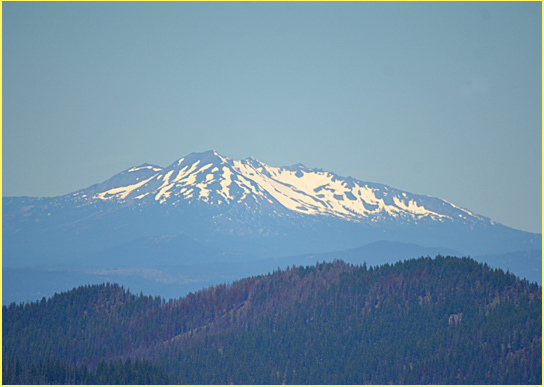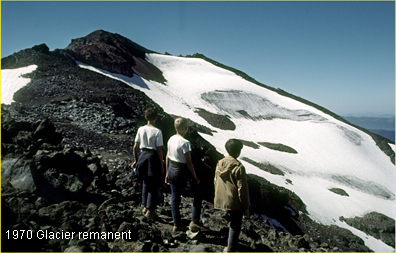Our late May climb took us up the large snowfields on the East side, and onto the main summit ridge just north of the summit. A prominent gendarme on the ridge provided a bit of interest, and on the descent, a good-sized avalanche released from our footfalls. Interestingly, this mountain supported a small glacier up into the early part of the Twentieth Century. It's ice can still be spotted high on the north slope during the very late summer when all of the past season's snowpack has been melted off. The so-called Little Ice Age, which was a worldwide phenomenon, peaked during the 17th, 18th and 19th Centuries. It caused small glaciers to form on even modest peaks like Diamond Peak, Mt. Bachelor and Mt. Thielson.... This small-version Ice Age was also the larger-scale cause of the severe winters with much snow that mark early American Revolutionary War history, such as the severe winter at Valley Forge in Pennslyvania. Below is a 2016 telephoto taken from the rim of Crater Lake in very late June, looking north at the south side of Diamond Peak.

